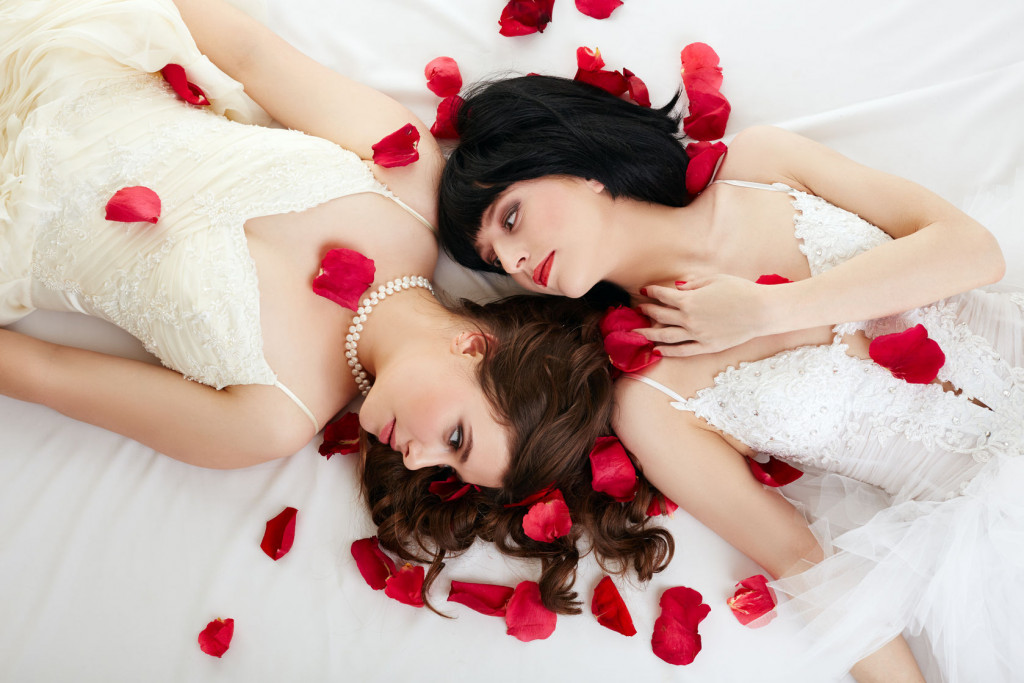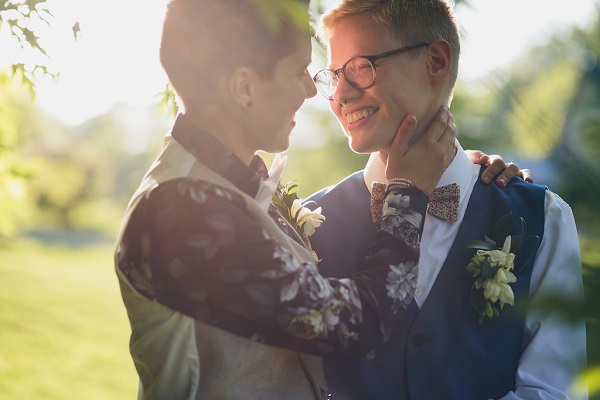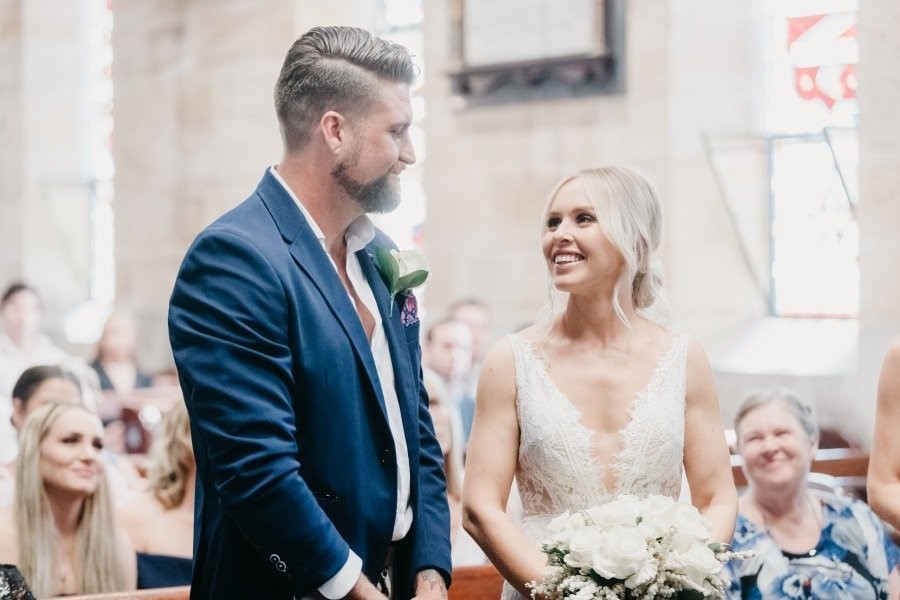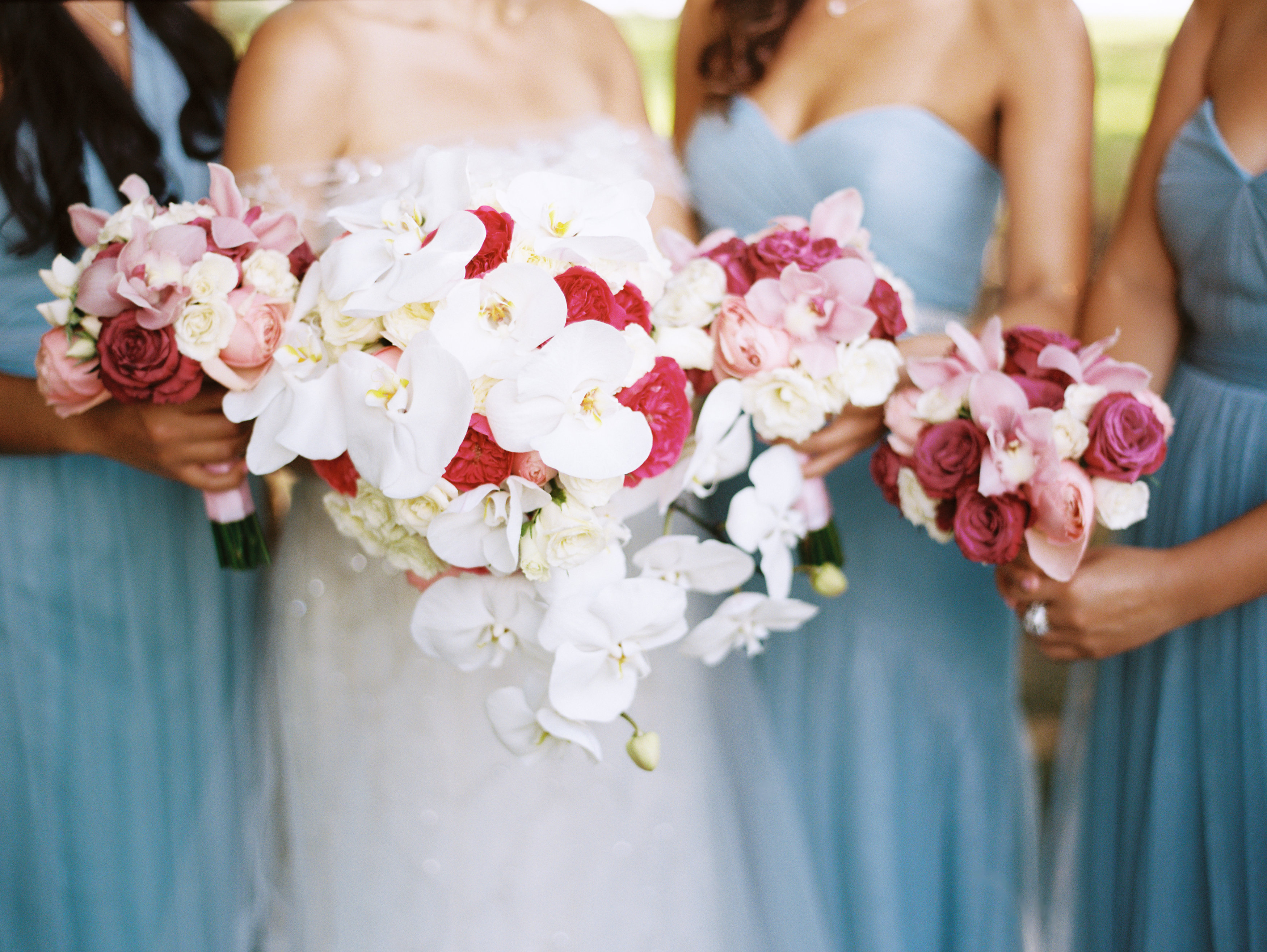This entry is from our Expert Guest series where wedding and honeymoon professionals share their best tips on creating memories that last a lifetime….
While there are hundreds of resources offering up wedding etiquette and advice on everything from how to address wedding invitations to how to seat your family at the ceremony, so much of that etiquette and advice is outdated and is geared solely toward heterosexual couples. Much of it is also riddled with heteronormative language (the “bride’s family” sits here and the “groom’s family” sits there) that can be a huge turn off to LGBTQ+ couples, even if the advice is still relevant.
So now that same-sex marriage is legal across all 50 states, it’s long past time for us to rethink the etiquette of weddings with LGBTQ+ couples in mind.
Etiquette for LGBTQ+ Couples
Here’s the good news, couples, YOU CAN DO WHATEVER YOU WANT! Gone are the days where you need to feel forced into patriarchal or heteronormative stereotypes about weddings. The only thing that matters is that at the end of the day you are legally wed and your love has been celebrated with your friends and family. How you get there is totally up to you. That being said here are four areas where we hear LGBTQ+ couples asking for etiquette help:
1 – Walking Down the Aisle
It’s a scene we are all familiar with. The groom stands up at the altar from the start of the ceremony and anxiously waits for his bride to be ushered down the aisle by her father who will give her away. If you are part of a same-sex couple or if one or both of you identify as gender nonconforming or non-binary, this tradition can feel like a trap. Obviously, there are alternatives, and these are a few of our favorites that work for LGBTQ+ and hetero couples alike:
- Each of You Walk Down the Aisle On Your Own. The order is up to you, but each of you get a chance to be in the spotlight and gets rid of the “father giving away the property of his daughter” symbolism.
- Each of You Walk in at the Same Time from the Side of the Ceremony Venue. We love the symbolism and visual aesthetic of this at weddings. Each of you enter in from the sides at the same time and walk towards each other to meet at the altar. This also means that no one is ever left anxiously waiting up at the front and you get to lock eyes on your beloved the whole way into the room.
- Each Member of the Couple is Ushered in by Both of Their Parents, Close Friends, or Family. Once again, the order of who walks down the aisle first is up to you, but not everyone has a living father, and people raised in a two-mom household won’t have a dad to walk them down. Who you have walk down the aisle with you is really more about paying tribute to the people who helped raised you and brought you to this point in your life. That can mean both your parents, close friends, your aunt and uncle — whoever is important in your life.
It is also the custom in Jewish weddings that the groom is ushered in first by both his parents and then the bride is ushered in by both her parents. I love this tradition, and it’s actually the approach we took when my husband and I got married. It makes life easier for queer couples, and even for queer parents of couples.
2 – Ditch the Whole “Groom’s Side” and “Bride’s Side” When it Comes to Seating at LGBTQ weddings
The idea that the bride’s friends and family would sit on one side of the ceremony venue and the groom’s would sit on the other harkens back to times when marriage was much more of a transaction and a lot less about love. Nowadays, couples often have a large community of friends and family that are loved by both members of the couple, and it seems pretty silly to force this outdated heteronormative tradition on either LGBTQ+ couples or heterosexual couples.
3 – “I Now Pronounce You…”
This is another tradition that we are all pretty familiar with. At the end of the ceremony, the officiant announces that you are officially married. In traditional hetero ceremonies this can sound like “I now pronounce you man and wife!” or “I now pronounce you Mr. and Mrs. Smith” How you want to be presented to the world and what you want to be called is 100% up to you, and you should feel comfortable enough with your officiant to talk through what you want for an announcement and what pronouns you want used during the ceremony. A great gender-neutral option is “I now pronounce you partners in marriage” or if you want to make it clear that you both are taking a single last name “I now present the Smiths!” If you like the formality of “Mr. and Mrs.” but one or both of you don’t identify as either male or female, the gender-neutral salutation “Mx” can be used (pronounced “Mix”).
Remember, for many friends and family this will be the first introduction to you as a married couple and what you want to be called, so if you aren’t clear in this introduction you may be correcting your family for years to come. If you are having a DJ or MC announce you as you enter the reception, make sure they know how you preferred to be presented as well. If your cousin hires the DJ and doesn’t provide info about the couple, that DJ might make an assumption that this is a hetero wedding and might announce “Presenting the man and wife!” as two women enter the room. This has actually happened…and, WOW, is it awkward for everyone.
4 – Gather Your Wedding Attendants, Not Your Bridesmaids and Groomsmen
Even if you and your partner solidly identify as either male or female, don’t force your friends to fit into gender-normative labels like “bridesmaid” or “groomsman.” I mean, who wants the word “maid” in their label anyway? Instead, consider using the term “wedding attendant” and feel free to include your non-binary or gender nonconforming, male, and female friends and family in your wedding party and don’t feel pinned down by this outdated tradition.
Help finance your wedding dreams with a https://www.honeyfund.com/Honeyfund honeymoon registry.

Bio: Jen Siomacco is the CEO of Catalyst Wedding Co. and was the 2017 recipient of the Girlboss Foundation Grant. She works to mesh together her passion for feminism, love stories, equality and design into the brand of Catalyst while she sits on her couch and snuggles up with her super lazy cats. Photo credit: Catalyst Wedding Co.


















very good. Thank you for sharing!…………………
It was cool and interesting
This topic is quite interesting for me, because I have been studying gender equality and the situation around LGBTQ for a long time. If you are also interested, then on the site you can find and read more interesting information about gender equality and the problems that arise in today’s society around this topic. I recommend.